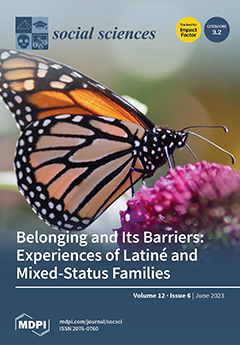This mixed-method study aimed to better understand the prevalence and qualitative experiences of sexual harassment and assault (SHSA) among trail and ultrarunners. Over 1500 runners (1215 females; 259 males; 28 transgender, non-binary, gender-fluid) of ages ranging from 18 to 77 (
M =
[...] Read more.
This mixed-method study aimed to better understand the prevalence and qualitative experiences of sexual harassment and assault (SHSA) among trail and ultrarunners. Over 1500 runners (1215 females; 259 males; 28 transgender, non-binary, gender-fluid) of ages ranging from 18 to 77 (
M = 39) responded to an online survey assessing the frequency and types of SHSA incidents experienced and the extent to which SHSA changed running behavior and feelings of safety. Respondents reported between 0 and over 100,000 incidents of SHSA, including catcalls, spanking, flashing, unwanted verbal advances, stalking, forced sexual acts, and rape. Of the 1502 respondents, 61% reported SHSA while running. Significantly higher rates of SHSA were reported by female, transgender, non-binary, and gender-fluid runners compared to male runners: 70% of female respondents and 61% of transgender, non-binary, and gender-fluid respondents reported incidents of SHSA compared to 17% of male respondents (all
p < 0.001). Utilizing Mahalanobis procedures, discriminant, and chi-square analyses, a group of 75 responders was identified as outliers, reporting significantly more incidents of SHSA (1000 to 300,000) than the more normative respondents (
p < 0.0001). For each type of SHSA, the two groups differed significantly in the number of reported incidents (
p < 0.001). There were significant differences in perceived safety and how SHSA changed their running behavior. Gender inequities and challenging false memory claims are discussed. The findings underscore the importance of empowering runners to create a shared vision for the running community to promote safety and well-being.
Full article





